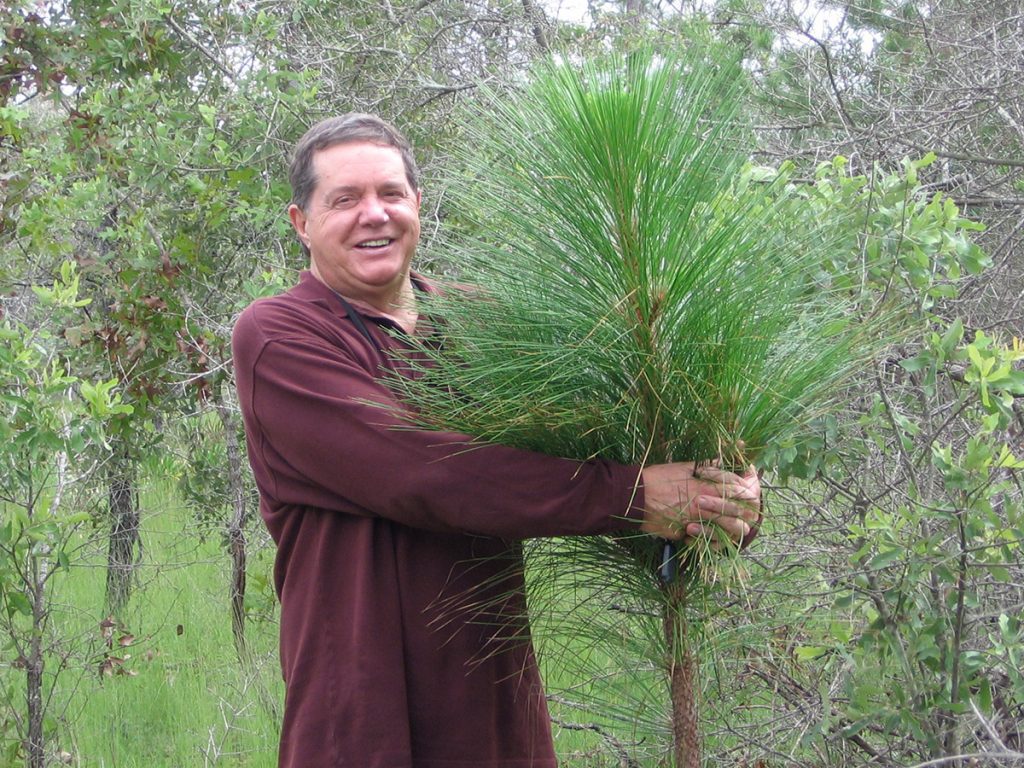

It’s made up of 55,000 acres of private land, but in 300 years there is a plan is for it to be an old (almost) growth forest of longleaf pines. We explore the work that has already been done and what it looks like now.
Wandering through a sandhill looking for gopher tortoises, “Turtle” Bob Walker spots a young longleaf pine. This tree is in its bottlebrush stage, a knee-high teenager getting ready to bolt. Unlike Walker or I, it could very well witness the entirety of the 300-year plan here at Nokuse Plantation. It likely first sprouted during Nokuse’s first habitat restorations in the early 2000s; in 2300, it might have grown to be a grandfather tree in an (almost) old growth forest.
The three hundred year plan was M.C. Davis’s vision. After making a living as a gambler in his 20s, Davis turned his winnings into hundreds of millions of dollars buying land and mineral rights. Then, one day, he stumbled into a rally for black bears in Florida. Learning about bears led to his devouring books on ecology and Florida habitats. He caught the conservation bug, and starting in 2000, he spent $90 million on land for a private preserve along the Choctawhatchee River.


Restoring and managing 55,000 acres of private land is an ambitious undertaking. A majority of the property was once timber land that Nokuse is returning to native longleaf pine ecosystems. As we’ll see on our adventure today, there are also wetlands and waterways here; these would benefit from regularly burned pinelands.
Rob Diaz de Villegas is a senior producer for television at WFSU Public Media, covering outdoors and ecology. After years of producing the music program OutLoud, Rob found himself in a salt marsh with a camera, and found a new professional calling as well. That project, the National Science Foundation funded "In the Grass, On the Reef," spawned the award-winning WFSU Ecology Blog. Now in its tenth year, the Ecology Blog recently wrapped its most ambitious endeavor, the EcoCitizen Project.
Rob is married with two young sons, who make a pretty fantastic adventure squad.





